Italy – A Road Trip Through Sicily
We landed in Palermo during the last days of September, rented a car, and drove to Cefalu. Sheltered by a mammoth rock (La Rocca), Cefalu is a picturesque town with a rich history. It is said that Hercules came here to build a temple to Jupiter and Daphne is still imprisoned in the rock. Cefalu bears the imprint of all the nations and cultures that have landed there over the centuries: The Carthaginians, Greeks, Romans, Byzantines, Vandals, Arabs, Nomads, and Spaniards. Today, its narrow little streets are crammed with locals and visitors, and driving presents a challenge as many streets are reserved for pedestrians only. It has gorgeous beaches, and crystal clear bays and coves, which are packed during the months of July and August but glorious in late September / early October. We reached the Kalura Hotel after dark and were given a room with a balcony and an ocean view. The sight that greeted us when we awoke the next morning and drew back the curtains was the most spectacular welcome to Sicily.
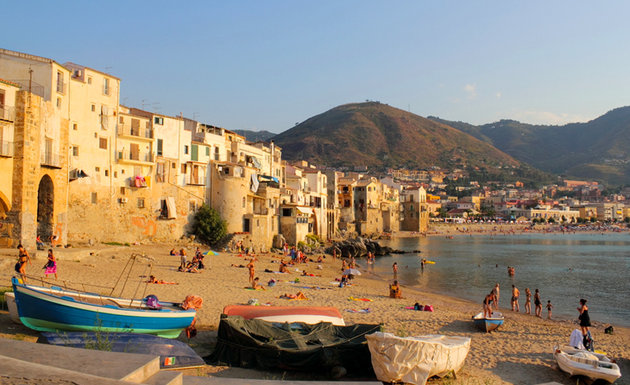
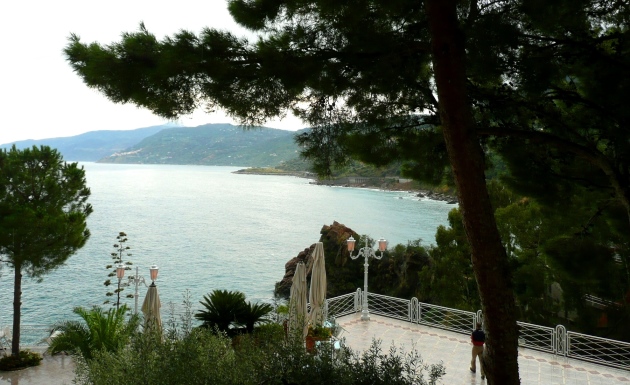
We spent two nights in Cefalu then drove inland through the countryside to Enna, where we stayed at Gigliotto – a former monastery that is now a small hotel – built around a courtyard filled with flowering planters and window boxes. The accommodation was basic but clean, and adequate. The dinner was hearty Sicilian cuisine, and the setting in the heart of vines and fields of cactus was tranquil and beautiful.
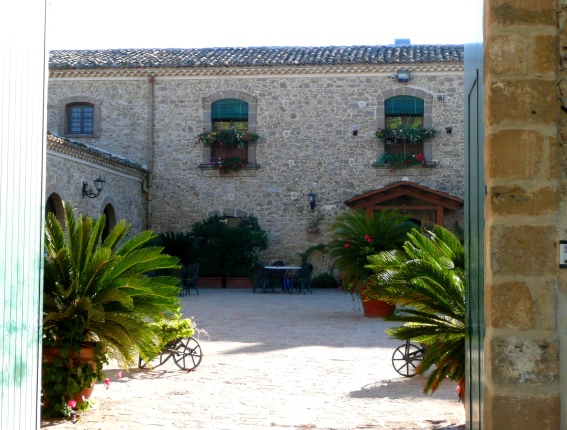
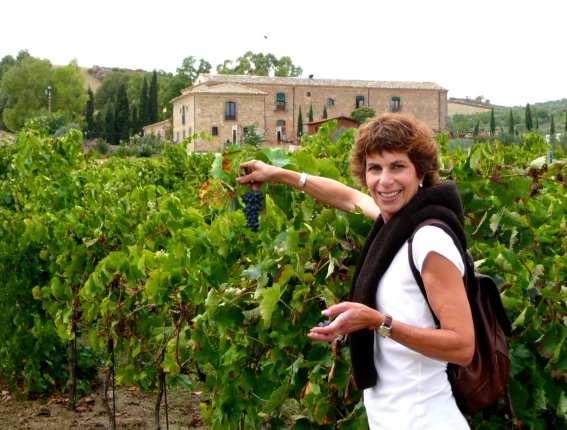
From Gigliotto it’s a short drive to Piazza Amerina, and the must see Villa Romana del Casale. A private Roman villa built between 330 and 360 A.D., its floors and walls are covered in colored mosaics depicting scenes from daily life: the hunt, women in bikinis engaging in competitive sport, the feasts, the fashions of the day, animals, and festivities. During our visit, restorers, dressed in white ‘space suits,’ were still engaged in painstakingly restoring the mosaics.
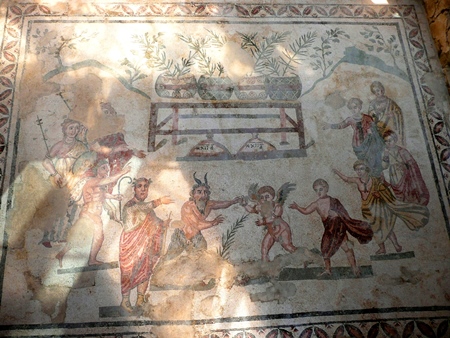
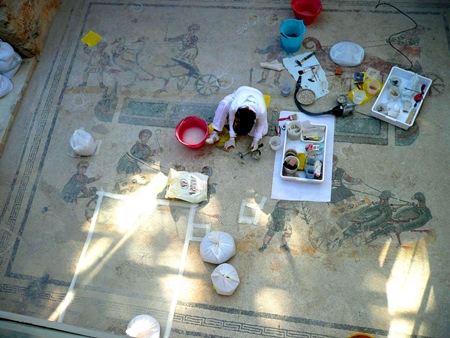

From Piazza Amerina to Taormina, the jewel of Sicily. Thankfully, our hotel – Villa Fiorita – was at the very last turnoff before entering the archway to the Old City and actually had parking available. Once again the views from our bedroom, the breakfast patio, and the swimming pool were spectacular. We were a stone’s throw away from the entrance to the Old City and Corso Umberto with its trendy boutiques, cafés, and restaurants. In the distance, Mount Etna huffed and puffed sending out a column of white smoke into the blue sky. We caught the funicular down to the Beach Club (just the funicular ride itself was worthwhile for the views it afforded of the homes and the coastline) and swam in the crystal clear waters of the tranquil cove with an island at its center. At lunch time, we sat at a beach cafe indulging in glasses of chilled sparkling wine, bruschetta, and fritto misto di mare (lightly fried, fresh seafood).



The drive from Taormina to Siracusa took us through the tranquil countryside where olives were being harvested. We stopped for lunch in Catania, a town which lies close enough to Mount Etna to have felt the heat of the volcano’s lava raining down upon it on several occasions. When we reached Siracusa, we crossed into the walled Old City of Isola di Ortigia via the Ponte Nuova. Navigating the streets here presented a series of challenges which provided much frustration coupled with lots of laughter. When we finally snagged a legal parking spot, we were so overjoyed that one would have thought we’d discovered a pot of gold. We headed straight for Piazza del Duomo, one of the most beautiful squares in all of Italy. It has an unusual triangular shape and is dominated by the Duomo which was built on the ruins of the Temple of Minerva. In the 7th Century, it was converted into a basilica and in the 18th Century (after suffering damage in an earthquake) was rebuilt in the Baroque style. The result is a fantastic juxtaposition of massive Doric columns and the ornate Baroque style. At the far end of the square is the church of Santa Lucia, and two Baroque palazzos stand facing one another at the point of the triangle. We sat in the shade enjoying cold beers and soaking up the gorgeous sight of the late afternoon sunlight playing on the facades of these historic structures.

Our little hotel – run by a typical Sicilian, efficient, feisty, young woman – was a win. By then, I had gotten into the routine of grabbing the camera and heading for the bedroom balcony in the early mornings as soon as the alarm clock jangled. This time I was greeted by red geraniums leaning out of their window box staring at the ancient curved stone walls of the Citta Vecchia, the historic old houses, the calm waters of the Ionian Sea, and Mount Etna in the distance.

In Siracusa, we enjoyed progressive dinners so that we could savor the ambience as well as the food: A late afternoon beer in Piazza del Duomo; an hors d’oeuvre at sunset on the waterfront watching the sun sink below the horizon; and a cozy dinner at a family run Sicilian tavernita.


Reluctantly we left Siracusa and continued to Agrigento. Upon reaching Agrigento in the late afternoon, we drove directly to the Valley of Temples (Valle dei Templi), arriving just as all the tour groups were boarding buses and returning to their hotels. With no more than a smattering of visitors, it felt as though we had this remarkable site all to ourselves. The sky was blue; the majestic Greek Temple ruins were golden; the gnarled olive trees, silver; the blue ocean sparkled below; and the fields in the distance were a patchwork of ochre, terra cotta, gold, and green. As is often the case, the timing of one’s visit to a site can make the world of difference to one’s enjoyment. We also visited the ancient Giardina della Kolymbetra (Kolymbetra Gardens) and were given the most memorable private tour by the caretakers – a vivacious young woman and her golden retriever – who clearly revel in the beauty of their surroundings.
In Agrigento, we stayed at the Colleverde Park Hotel. We had a picture perfect view of the 5th Century Temple of Juno from our bedroom window, and the extensive gardens of the hotel were exquisite.


On to Erice, a town founded by the Phoenicians on a mountain top 2,478 feet above sea level with a 360 degree view across the plains of Trapani, the west coast of Sicily, and on clear days –like the one we had – Cap Bon in Tunisia. Surrounded by defensive walls, Erice has several churches and two castles, the most impressive being the 12th Century Castello de Venere (Venus Castle) built on top of the ancient Temple of Venus. When one tires of walking its steep, cobblestone, medieval streets, Piazza Umberto 1 is a great spot to relax with a cappuccino and a famous Erice cannoli for dessert.


We spent the night in Valderice, a short drive from Erice and the next day made our way back to Palermo making two stops. One at Segesta, which has two fantastically preserved ancient sites: A 5th Century B.C. Doric temple which stands alone in the countryside surrounded by fields and trees; and a 3rd Century B.C. amphitheater.

Our last stop was for lunch in the picturesque fishing town of Castellammare del Golfo. East of the town are lovely sandy beaches which were uncrowded and inviting at that time of the year. We should have planned to spend a night there.


We fell in love with Sicily. It’s very different from the mainland of Italy. The countryside is much starker, and the people take getting used to. They are like the prickly cacti that grow in abundance on the island: harsh and intimidating on the outside, but as sweet as a prickly pear on the inside. We loved them. And have many wonderful memories of their brash warmth and kindness.
Disclosure: The following photos were not taken by me: The boats on the beach in Cefalu, and the photos of Segesta, and Castellammare del Golfo.
